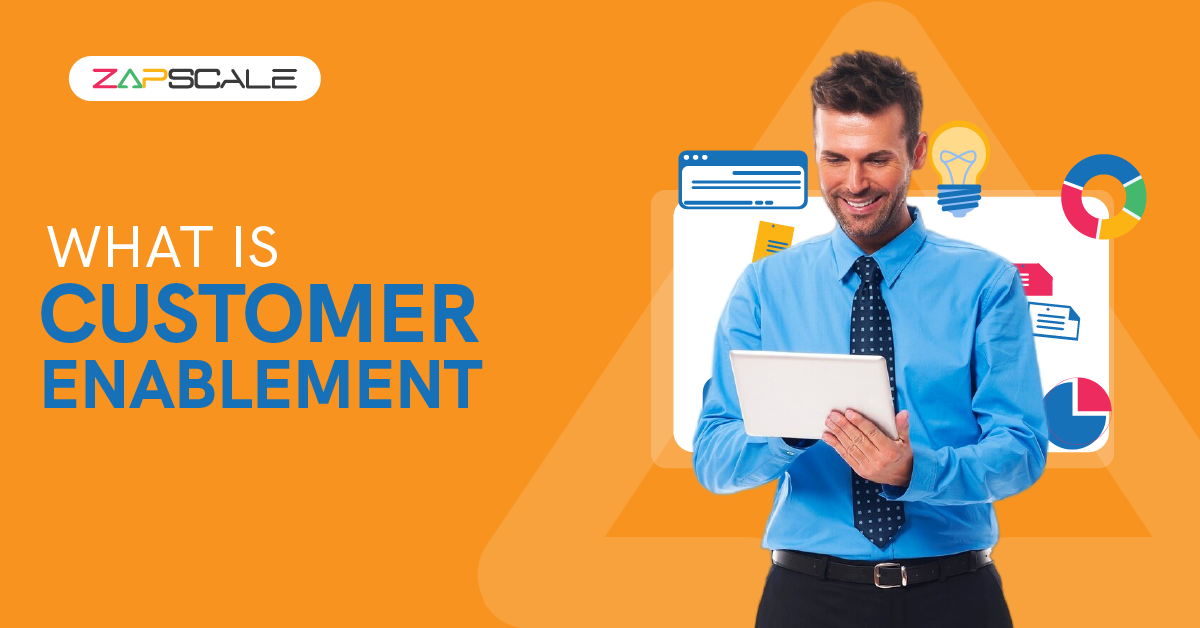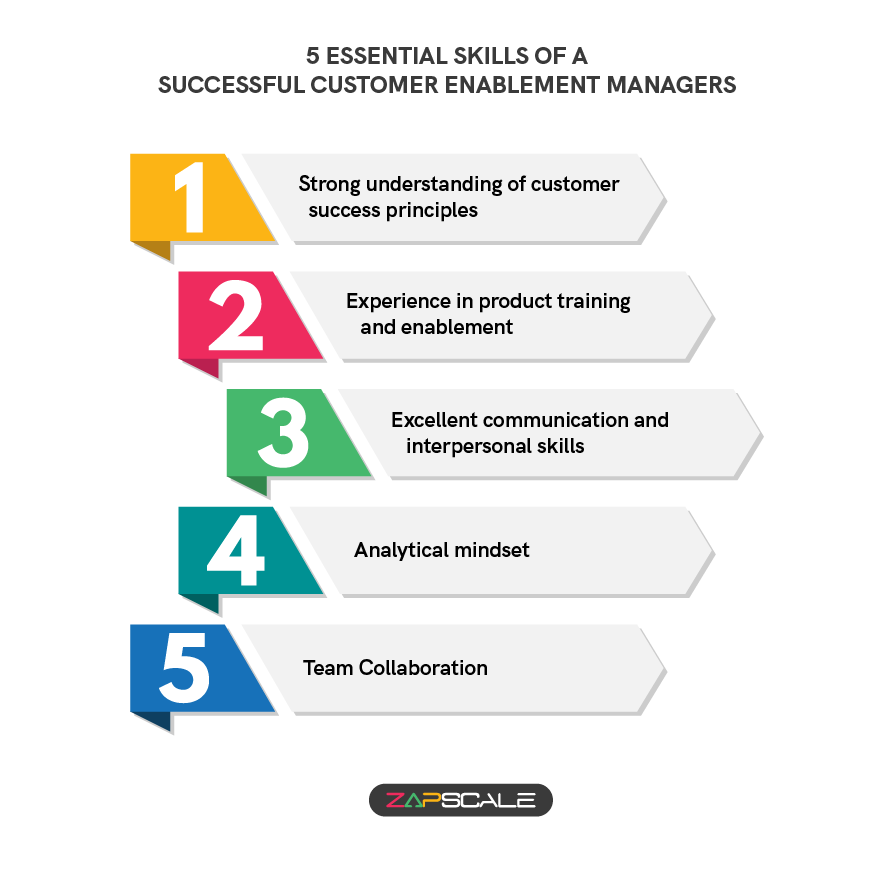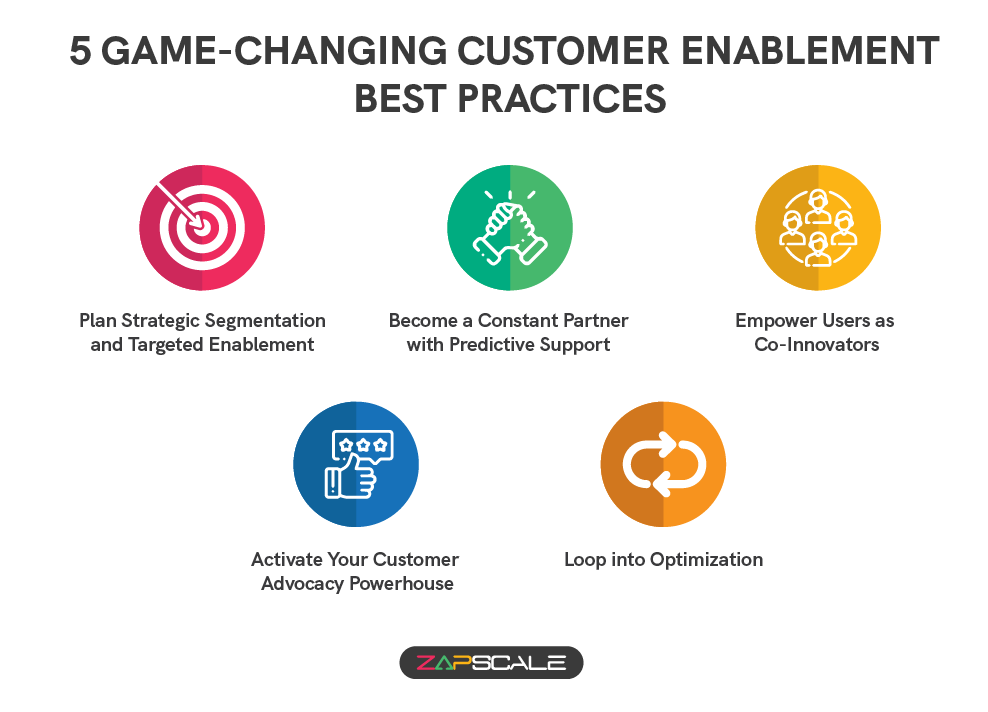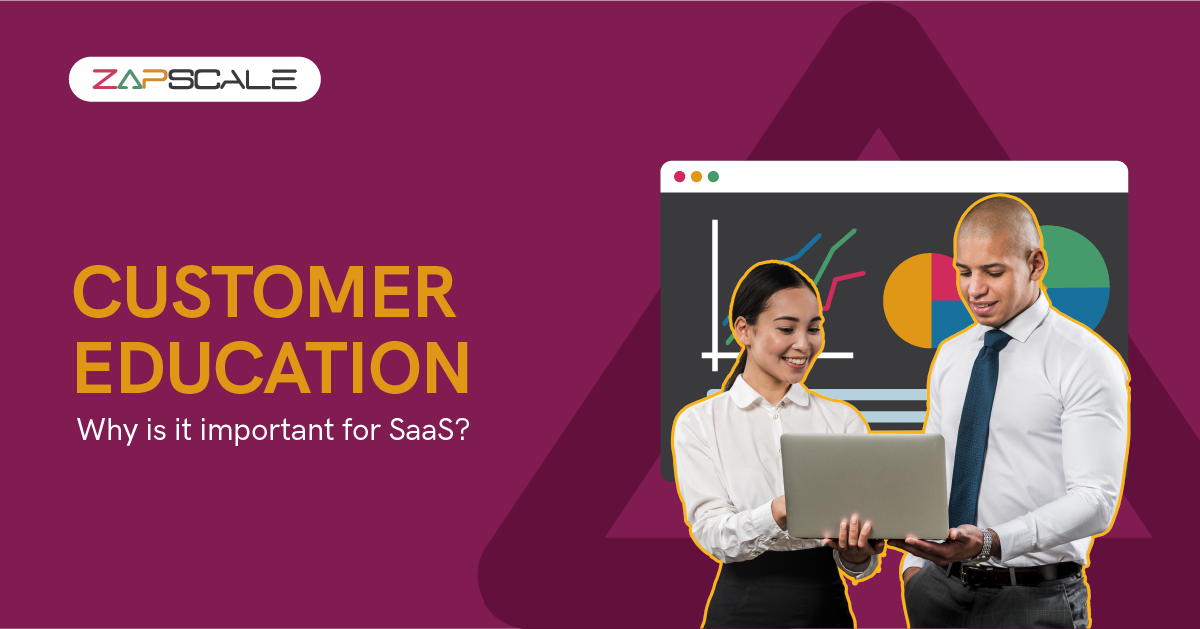CATEGORY > Customer Enablement
How Customer Enablement Completes Your B2B SaaS Strategy

Customers sign up for a new B2B SaaS tool, enthusiastic to streamline their workflows. But then, onboarding hits with long manuals, endless webinars, and information overload, making them passive spectators in their own success stories.
However, the B2B SaaS landscape is undergoing a quiet revolution with customer enablement. It's becoming more about a strategic shift, equipping users with the right resources at the right time.
The concept is similar to sales enablement but for Customer Success teams. As Customer Success teams juggle customer onboarding, ensuring satisfaction, and driving renewals, there's a growing investment in customer enablement initiatives.
These resources facilitate the customer's journey, guiding them from beginner to expert through timely, personalized support.
Customer enablement empowers users to become active participants, providing them with the knowledge and resources to not just use a product but to truly rock it.
What is Customer Enablement?
Customer enablement empowers customers for success (especially in SaaS models). It's a mindset that says when our customers succeed, we succeed. Customer enablement is about giving your customers the tools, knowledge, and resources to get the most out of what they've invested in.
Here's how it works:
- Customer Enablement operates on a loop of education, support, and feedback.
- You start by making sure the customers know the ins and outs of your product or service. That means comprehensive training and resources to get them up to speed and excited about the possibilities.
- Once customers have acquired the necessary knowledge, Customer Enablement ensures they can access continuous support and assistance.
- This support may include dedicated customer success teams, technical support channels (email, chat, phone), and community forums where customers can interact with experts and peers to seek guidance and share best practices.
- It's not just about solving problems when they come up. Customer Success Managers (CSMs) act as trusted advisors, proactively identifying potential roadblocks, providing personalized recommendations, and working closely with customers to make sure they are getting the most out of what you offer.
The payoff? Better outcomes overall!
Why Do SaaS Businesses Need Customer Enablement?
While customer enablement is about education at its core, it overextends its benefits beyond that. Customer enablement is about empowerment, enhanced customer journey, and assembling a customer-centric ecosystem. This, in return, delivers tangible B2B and SaaS business benefits.
Let's look at a few of them:
- Customer enablement enhances customer loyalty and retention by investing in their success, resulting in higher retention rates, increased customer lifetime value, and greater profitability.
- Customer enablement drives innovation and product improvement. By actively engaging with customers and soliciting their feedback, businesses gain invaluable insights into their needs, preferences, and pain points.
- It can be a powerful business differentiator as businesses that excel at educating and empowering their customers stand out from the competition, earning a reputation for excellence and innovation.
This not only attracts new customers but also helps boost product adoption, customer satisfaction, and upsells and cross-sells.
Above all, by empowering customers with the tools, knowledge, and support they need to succeed, you can:
- Build more meaningful customer relationships
- Drive innovation through data-driven outcomes
- Achieve sustainable growth
- Unlock new revenue streams
- Catalyze on a deep sense of loyalty and advocacy
Responsibilities of a Customer Enablement Manager
As SaaS companies strive to not only acquire but also create a delightful journey with customers, the role of a Customer Enablement Manager (CEM) emerges as a pivotal one. So, here's a breakdown of the key duties of a CEM.
A. Understanding the Role
The core function of a Customer Enablement Manager revolves around empowering customers to achieve their desired outcomes through effective utilization of products or services.
The ideal customer enablement manager should possess a blend of product expertise, training/instruction abilities, project management skills, and a customer service mindset.
They must have strong technical knowledge of the product but also the ability to explain complex topics clearly and patiently to non-technical users.
B. Key Responsibilities & Initiatives of a Customer Enablement Manager
- Collaborating closely with sales, marketing, product, and customer success teams to align strategies and ensure a seamless customer journey.
- Developing comprehensive enablement plans and roadmaps tailored to each customer's unique goals and challenges.
- Educating customers on product features, best practices, and industry trends. Plus, creating engaging training materials and conducting interactive sessions to drive product adoption and proficiency.
- Troubleshooting technical issues, providing guidance on configuration and integration, and acting as a bridge between customers and internal technical teams.
- Actively listening to customer feedback, identifying opportunities for improvement, and advocating for the customer within the organization.
- Tracking and analyzing KPIs for assessing the effectiveness of enablement initiatives.
Customer Enablement Managers leverage data insights to refine strategies and optimize outcomes.
- Act as a subject matter expert to guide and support both customers and internal stakeholders.
- Lead and mentor a customer enablement team (if applicable). In larger organizations, the CEM (Customer Enablement Manager) might manage a team of specialists, providing coaching to ensure everyone contributes effectively.
C. Essential Skills of a Customer Enablement Manager
An ideal candidate for a CEM role would possess a blend of skills and experience:

1. Strong understanding of customer success principles
They should be passionate about helping customers achieve their goals with the product.
2. Experience in product training and enablement
A background in creating and delivering training materials is a plus.
3. Excellent communication and interpersonal skills
The ability to connect with diverse audiences and explain complex topics clearly is essential.
4. Analytical mindset
Being able to interpret data and identify trends is crucial for optimizing enablement programs.
5. Team Collaboration
Collaboration among Customer Enablement Managers and various teams is crucial to achieving shared goals. They must skillfully build consensus, foster teamwork, and drive results.
5 Customer Enablement Best Practices To Build Your SaaS Success Story
With all that we have discussed so far, you would already understand that your SaaS business needs a customer enablement strategy. Even the most genius B2B solution can fall flat without a well-thought-out customer enablement strategy.
But, where do you begin?
Let's dive into the 5 proven customer enablement best practices that will solidify your position as an integral partner, fostering customer success stories that propel your SaaS venture to new heights of growth and market dominance.

1. Plan Strategic Segmentation and Targeted Enablement
Speak customer language with role-specific content. By analyzing user personas, behavioral patterns, and usage data, you can identify distinct user segments with unique needs and preferences.
Craft bespoke enablement programs for each segment, focusing on delivering hyper-relevant content, personalized training sessions, and targeted knowledge resources.
2. Become a Constant Partner with Predictive Support
Move beyond reactive support to embrace the power of predictive intelligence. Leverage machine learning algorithms to analyze user behavior patterns and anticipate potential roadblocks before they occur.

Consider blending tech and human touch to swiftly tackle routine issues and seamlessly guide customers to human assistance when needed.
By keeping tabs on support performance, you not only spot recurring snags to refine your product but also curate self-help materials that hit the mark.
3. Empower Users as Co-Innovators
Shift from customer engagement to co-innovation by facilitating collaborative communities where users play an active role in shaping the course of your platform.
Invite select users to participate in beta testing and co-design sessions for upcoming features.
Establish dedicated communities where users can contribute ideas, share feedback, and collaborate on feature enhancements or customizations.
4. Activate Your Customer Advocacy Powerhouse
Delighted customers are your most persuasive marketers and enablement force multipliers.
Leverage various advocacy tools to identify your most enthusiastic brand champions.
Incentivize and empower these advocates to share their success stories, contribute to your community forums, and participate in customer advisory boards – amplifying your enablement efforts while inspiring prospects to embark on their transformative journeys.
5. Loop into Optimization
Establish continuous feedback loops to gather insights and iterate on your customer enablement initiatives iteratively.
Implement feedback mechanisms such as sentiment analysis, user surveys, and feedback forums to capture user sentiment and identify areas for improvement.
Actively gather input from customers at various touchpoints throughout their journey, demonstrating your commitment to listening and adapting to their evolving needs.
This will help you in measuring impact and ROI.
Conclusion
Long story short, empowered users are your greatest asset. Invest in their success, and watch your business thrive! With customer enablement, you invest in 'user success.' And you can never go wrong with being user-centric. You get satisfied customers who become vocal advocates, driving organic growth and turning your business into a success story. It'll always prove to be a win-win.
Don't treat customer enablement as a strategy, make it a mindset—a commitment to your customers' triumphs as if they were your own. Most importantly, you've got to bring the customers into the inner circle as co-creators and collaborators. The cheat code is yours for the taking!
ABOUT THE AUTHOR
Popular from Customer Enablement
Quality Content,
Straight To Your Inbox!
Subscribe for the latest blogs, podcasts, webinars, and events!

Write a Blog
If you have experience in CS and
a flair for writing, we’d love to
feature you.
Write to us on
hello@zapscale.com



